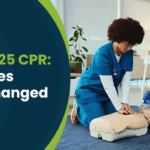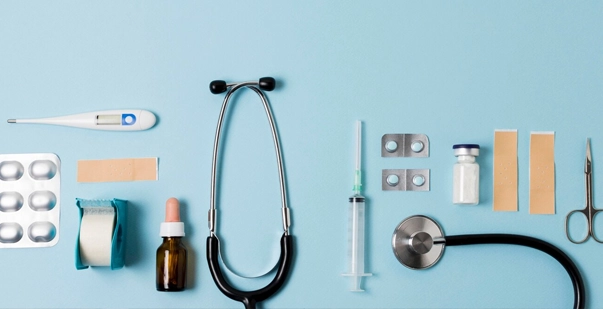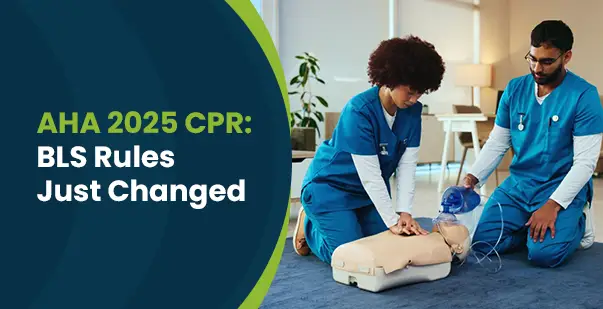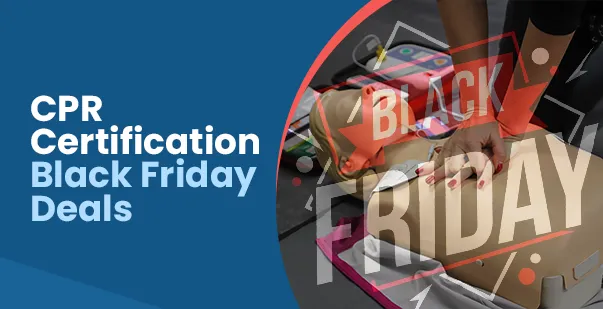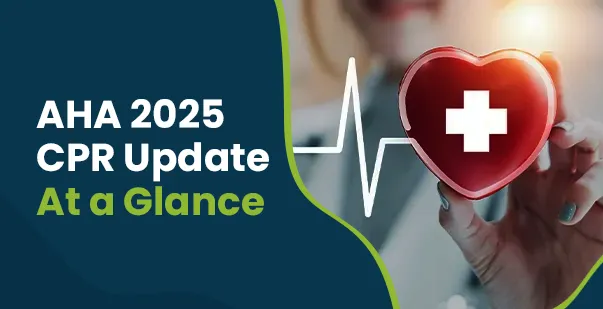A travel first aid kit is an essential item that ensures you’re prepared for unexpected health issues during your trips. No matter if you’re in a new place visiting cities, going for a hike or are on a long road trip, any sort of accident or small health problem can happen any time.
Having a well-stocked first aid kit can make a significant difference in addressing injuries promptly and effectively. In fact, the importance of being prepared is reflected in the growing demand for first aid kits worldwide. The global first aid kit market size was USD 0.57 billion in 2024 and is projected to grow to USD 0.83 billion by 2032, exhibiting a CAGR of 4.7% during the forecast period.
As tourists, we often tend to concentrate on the adventure of the trip, but health and safety without a doubt are two crucial aspects of any trip.
In this article, we will introduce the 9 must-have items that every traveler must carry in their first aid kit.
What is a Travel First Aid Kit?
A travel first aid kit is a bunch of common medical supplies targeted towards combating injuries or health problems that can happen during your travels. It includes basic items such as bandages, antiseptic wipes, pain relievers, and motion sickness remedies, helping travelers address minor accidents or ailments on the go.
A well-organized travel medicine kit can provide quick relief for things like cuts, headaches, or stomach upset, allowing you to continue your trip without major disruptions.
Having these essential supplies with you ensures you’re prepared for the unexpected and can manage health-related concerns until you can seek professional care if needed.
9 Must-Have Items for an Effective Travel First Aid Kit
No one likes to think about health emergencies while traveling, but being prepared for the unexpected can make all the difference. To help you stay safe and enjoy your trip, here are 9 must-have items that should be in every effective travel first aid kit.
1. Adhesive Bandages (Plasters)
‘Adhesive bandages’ or ‘plasters’ are not simply tools to cover cuts and scrapes. They provide a physical barrier that prevents the entry of dirt and bacteria thus reducing the chances of getting an infection.
What often goes unnoticed is how crucial it is to find a specific type that would meet your requirements. For example, if you’re going to swim at the beach or go hiking, waterproof bandages are essential as they do not come off easily when wet.
On the other hand, fabric bandages are more flexible and breathable, making them ideal for covering larger wounds or when you need to keep them on for longer periods without irritation. Another thing to consider is the adhesive used in bandages.
Some adhesives are designed to be gentle on the skin, making them ideal for sensitive areas or for people with delicate skin. These small details can ensure better protection and comfort when you need it most during your travels.
2. Antiseptic Wipes & Cream
Antiseptic wipes and creams are crucial for cleaning wounds and preventing infection. When you’re traveling, you can easily encounter dirt, bacteria, or other harmful microorganisms that could make a small scratch or cut turn into something more serious.
These wipes are not only for treating injuries but also for disinfecting surfaces you touch, such as public transport handrails or restaurant tables.
What’s interesting is that these wipes are now a go-to for everyday hygiene, with 92% of Americans having used a cleaning, disinfectant, or antibacterial wipe, according to a survey by the American Cleaning Institute. This shows how widely accepted and trusted they are in everyday life, and they can be just as effective when treating minor injuries while on the go.
For better protection, it’s essential to use these wipes before applying any bandages or creams to ensure the area is properly cleaned.
3. Pain Relievers and Fever Reducers
Pain relievers and fever reducers are essential for addressing common issues like headaches, body aches, or fever while traveling. They help ease discomfort and make you feel better quickly. Having them in your first aid kit allows you to stay comfortable and continue enjoying your trip.
These following medications can be especially useful when you’re in an unfamiliar place, where accessing a pharmacy might not be easy.
| Medication | Purpose | Dosage |
| Ibuprofen | Reduces pain, fever, and inflammation | 200-400 mg every 4-6 hours |
| Acetaminophen | Relieves mild to moderate pain and fever | 500-1000 mg every 4-6 hours |
| Aspirin | Reduces pain, inflammation, and fever | 325-650 mg every 4-6 hours |
These medications help to manage pain and reduce fever while traveling. Ibuprofen is ideal for inflammation, while acetaminophen is gentler for those who need a milder option. Aspirin can also serve as a blood thinner in emergency cases, but it should be used with caution.
Always check for any contraindications, especially if you have pre-existing conditions or are taking other medications.
4. Gauze Pads and Medical Tape
Imagine you’re hiking through a beautiful trail, and you accidentally scrape your knee on a rock. You may have a bandage in your bag, but without gauze and medical tape, it’s hard to properly clean and cover the wound.
Gauze pads are essential for larger cuts or wounds because they help absorb any fluid and protect the injury from dirt and bacteria. The real benefit, however, is in how the gauze can help control bleeding. When combined with medical tape, it forms a secure, breathable dressing that not only keeps the wound clean but also reduces the risk of infection.
It’s important to know that medical tape doesn’t just hold the gauze in place — it also prevents the bandage from becoming loose or uncomfortable during movement. In an emergency, this tight seal ensures the wound stays protected, allowing you to continue your adventure without worrying about further injury.
5. Antihistamines (for Allergies)
Antihistamines are a must-have in your travel first aid kit, especially if you’re prone to allergies. These medications help relieve symptoms like sneezing, itching, or swelling caused by allergens such as pollen, dust, or insect stings.
One thing that many don’t know is that antihistamines can also help with mild allergic reactions to certain foods or plants while traveling in new environments. For example, you might come across food or plants that trigger a reaction, especially in countries with different allergens than you’re used to.
More than 50 million Americans suffer from allergies each year, and this number increases during travel as your body is exposed to unfamiliar substances. Antihistamines, such as Benadryl or loratadine, can provide quick relief and help you enjoy your trip without constantly worrying about allergic reactions.
Just be mindful of the drowsy effects some antihistamines can have, and consider non-drowsy options if you need to stay alert while sightseeing or exploring.
6. Thermometer
A thermometer is a must-have in your travel first aid kit to help monitor your body temperature when you’re feeling unwell.
There are two main types: digital thermometers and mercury thermometers.
- Digital thermometers are faster and safer, especially for children, as they use electronic sensors to measure temperature and give a digital reading in seconds.
- On the other hand, mercury thermometers, though more accurate in some cases, contain mercury, which can be hazardous if broken.
One important thing to keep in mind is that digital thermometers are often preferred because they are easier to use, safer, and more travel-friendly. For instance, digital thermometers can be used in various locations (mouth, underarm, or rectally), and they usually come with memory functions that store the last reading, which can help track changes in temperature.
7. Motion Sickness Remedies
Motion sickness can occur when your body feels movement differently from what your eyes see, which often happens during travel on boats, cars, or planes. It causes dizziness, nausea, and sometimes vomiting. To prevent or treat this, motion sickness remedies like over-the-counter tablets or natural options such as ginger are helpful. These remedies help balance the signals your body is receiving and reduce the discomfort of motion sickness.
For example, if you’re going on a long road trip and are prone to motion sickness, taking an over-the-counter pill like Dramamine before the trip can prevent nausea. Alternatively, if you prefer natural options, ginger tablets can be a good remedy to settle your stomach during travel.
Remember, it’s best to take these remedies before you feel sick, especially if you know you will be traveling on winding roads or during a boat ride.
8. Tweezers and Scissors
Tweezers and scissors are small but incredibly useful tools to have in your travel first aid kit. They’re essential for handling situations like removing splinters, ticks, or thorns that can get embedded in your skin while hiking or exploring outdoor areas.
One thing most people overlook is that the precision of the tweezer tips can help you safely remove small objects like glass shards, without causing further injury. When it comes to scissors, they aren’t just for cutting bandages—small, sharp scissors can also help trim nails that might become painful or ingrown during travel.
Having both tools in your kit can help you manage minor injuries quickly and effectively, preventing them from escalating into something worse.
Moreover, if you’re in a remote location without easy access to medical facilities, these tools could be the key to safely managing your own minor injuries until you can seek proper care.
9. Electrolyte Tablets or Oral Rehydration Salts (ORS)
When traveling, especially in hot climates or after physical exertion, staying hydrated is crucial. While many people think of water as the go-to for hydration, alcohol is often consumed during trips, which can actually worsen dehydration.
Contrary to popular belief, alcohol doesn’t help replenish electrolytes; in fact, it can lead to further depletion, making it harder for your body to maintain fluid balance. This is where electrolyte tablets or Oral Rehydration Salts (ORS) come into play.
These supplements are specifically formulated to replenish lost electrolytes such as sodium, potassium, and magnesium, which are vital for maintaining proper hydration and supporting nerve and muscle function.
Using ORS can help restore these essential minerals after sweating, diarrhea, or drinking alcohol, ensuring you feel energized and recover faster. Having a packet of electrolyte tablets or ORS in your travel first aid kit can make a big difference in preventing dehydration and its associated symptoms, like dizziness and fatigue, during your adventures.
Optional Additions for Special Needs
While the basics are essential, it’s also important to think about any special medical needs you or your travel companions may have. So, what are some additional items that you may have that may come in handy in customizing your first aid kit? Let’s review some likely optional additions that would help customize your individual first aid kit further.
1. Medications for Chronic Conditions
If you have a chronic condition (like diabetes, heart disease, or asthma), make sure to carry an adequate supply of your prescribed medications. This includes extra insulin, inhalers, or blood pressure medications. It’s also wise to bring a copy of your prescription and any relevant medical records in case you need to refill your prescription while abroad.
2. EpiPen (Epinephrine Injector)
For those with severe allergies (e.g., to nuts, insect stings, or medications), packing an EpiPen is crucial. An anaphylactic reaction can be life-threatening, and having this on hand can be the difference between life and death.
3. Personalized Medications or Supplements
Some people may need specific vitamins, supplements, or other medications that are important to their health. These could include things like thyroid medication, birth control pills, or pain management prescriptions. Always pack extra, as getting replacements in foreign countries may be difficult.
4. Specialized Medical Equipment
If you use any medical equipment, like a nebulizer for asthma, a blood glucose monitor, or a hearing aid, be sure to include these in your kit. Don’t forget extra batteries for devices like hearing aids, or spare parts for items like CPAP machines if you require them for sleep apnea.
5. Altitude or Motion Sickness Medications
If you’re heading to high-altitude destinations or places where motion sickness is common (like the mountains or seas), packing altitude sickness tablets or anti-nausea medications can help prevent discomfort and ensure a smooth trip.
6. Allergy-Friendly Items
For travelers with food allergies or sensitivities, carry safe snacks and any allergy-specific medications (like antihistamines or topical ointments). Also, remember to have a list of emergency contacts and hospital information for allergies or anaphylaxis situations.
7. Child-Specific Items
If traveling with children, include items specific to their needs, such as baby aspirin, diaper rash cream, or any medications for childhood conditions like fever or colic. You might also want to bring along fever-reducing patches, baby-safe sunscreen, and other child-friendly health supplies.
Tips for Packing Your Travel First Aid Kit
Packing your travel first aid kit efficiently is key to ensuring you have easy access to your supplies when needed most. Here are some practical tips to help you organize and pack your kit:
- Use small, clear bags: This helps keep your items organized and visible. You won’t have to dig around for a bandage or painkiller when you’re in a rush.
- Pack light but complete: Only include what you’ll realistically use. Don’t overpack, but make sure you have all the essentials like bandages, pain relievers, and any personal medication.
- Keep it accessible: Store your kit in an easily reachable place, like a backpack or travel bag, so you can quickly grab it in case of an emergency.
- Check travel rules: If you’re flying, remember that some items (like liquids or sharp objects) might have restrictions. Make sure everything fits in the allowed size for carry-ons.
- Regularly check expiration dates: Make sure your medications and supplies are up to date, so you’re not caught off guard with expired items.
These tips will help you be ready for anything while keeping your kit practical and easy to use.
Get Ready to Travel with Confidence and Safety
Having a well-stocked travel first aid kit ensures you are ready for any minor health issue or emergency that might arise during your trip. From bandages to pain relievers, these essential supplies provide peace of mind while traveling. Customizing your kit based on your specific needs and destination can make all the difference in your travel experience. Don’t forget to include items for special medical conditions or personal requirements, like allergy medications or motion sickness relief. With a little preparation, you can enjoy your trip with confidence, knowing you’re equipped to handle any health-related challenges that come your way.
